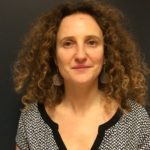Link to Pubmed [PMID] – 38870216
Link to DOI – 10.1371/journal.pcbi.1012227
PLoS Comput Biol 2024 Jun; 20(6): e1012227
Small populations (e.g., hospitals, schools or workplaces) are characterised by high contact heterogeneity and stochasticity affecting pathogen transmission dynamics. Empirical individual contact data provide unprecedented information to characterize such heterogeneity and are increasingly available, but are usually collected over a limited period, and can suffer from observation bias. We propose an algorithm to stochastically reconstruct realistic temporal networks from individual contact data in healthcare settings (HCS) and test this approach using real data previously collected in a long-term care facility (LTCF). Our algorithm generates full networks from recorded close-proximity interactions, using hourly inter-individual contact rates and information on individuals’ wards, the categories of staff involved in contacts, and the frequency of recurring contacts. It also provides data augmentation by reconstructing contacts for days when some individuals are present in the HCS without having contacts recorded in the empirical data. Recording bias is formalized through an observation model, to allow direct comparison between the augmented and observed networks. We validate our algorithm using data collected during the i-Bird study, and compare the empirical and reconstructed networks. The algorithm was substantially more accurate to reproduce network characteristics than random graphs. The reconstructed networks reproduced well the assortativity by ward (first-third quartiles observed: 0.54-0.64; synthetic: 0.52-0.64) and the hourly staff and patient contact patterns. Importantly, the observed temporal correlation was also well reproduced (0.39-0.50 vs 0.37-0.44), indicating that our algorithm could recreate a realistic temporal structure. The algorithm consistently recreated unobserved contacts to generate full reconstructed networks for the LTCF. To conclude, we propose an approach to generate realistic temporal contact networks and reconstruct unobserved contacts from summary statistics computed using individual-level interaction networks. This could be applied and extended to generate contact networks to other HCS using limited empirical data, to subsequently inform individual-based epidemic models.

